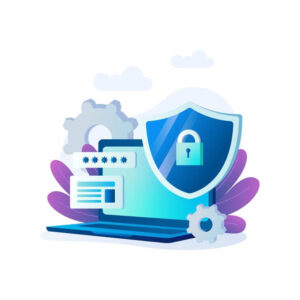In today’s threat landscape, cyberattacks are growing in both frequency and sophistication. To stay ahead, organizations can no longer rely solely on reactive measures. Security Operations (SecOps) embeds protection into every aspect of IT operations, uniting teams, processes, and tools so threats are spotted, investigated, and contained with minimal delay. With a strong SecOps capability, businesses gain the agility to recover quickly, learn from incidents, and adapt to whatever comes next.
What SecOps Really Means
SecOps breaks down the walls between security specialists and IT operators. Instead of handing a problem off and hoping for the best, everyone shares visibility into systems and works together on detection and response. Key elements include:
-
Cross-Functional Teams
-
Security analysts, network engineers, system admins, and developers collaborate on alerts and incidents.
-
Shared dashboards and regular briefings ensure no one is left in the dark.
-
-
Continuous Monitoring
-
Live tracking of logs, user activity, network traffic, and cloud services reveals anomalies as they happen.
-
Fast detection means faster containment.
-
-
Automation & Orchestration
-
Routine tasks—patch management, log sorting, basic triage—are handled by automated workflows.
-
Human experts focus on deep-dive investigations and threat hunting.
-
The Six Pillars of a Strong SecOps Program
-
Threat Intelligence & Analytics
-
Consolidate data from internal logs, industry alerts, and vendor reports.
-
Apply rule-based correlation and expert review to spot suspicious patterns early.
-
-
Security Information and Event Management (SIEM)
-
Centralize events from firewalls, servers, applications, and endpoints.
-
Correlate alerts to uncover multi-stage attacks.
-
-
Security Orchestration, Automation and Response (SOAR)
-
Automate containment steps (e.g., quarantining devices, blocking IPs).
-
Maintain a single workspace for analysts to track investigations.
-
-
Vulnerability Management
-
Scan infrastructure continuously for known flaws.
-
Prioritize fixes based on which systems are most critical.
-
-
Incident Response & Playbooks
-
Clearly define who does what, and when, during an incident.
-
Keep step-by-step guides updated for ransomware, phishing, insider threats, and more.
-
-
24/7 Security Operations Center (SOC)
-
Ensure round-the-clock coverage, whether in-house or through a trusted partner.
-
Use structured handovers to maintain full visibility across shifts.
-
Best Practices for Rolling Out SecOps
-
Build a Collaborative Culture
Break down “us vs. them” barriers. Hold joint drills, share post-mortem learnings, and celebrate wins together. -
Measure What Matters
Track how long it takes to notice an incident (MTTD) and resolve it (MTTR). Watch false-alarm rates so automation stays finely tuned. -
Infrastructure as Code (IaC)
Embed security checks into your deployment pipelines. Automated scans catch misconfigurations before they reach production. -
Risk-Based Prioritization
Rank assets and threats by potential impact—focus your efforts where they’ll do the most good. -
Ongoing Training
Run tabletop exercises and hands-on workshops so your team stays sharp on emerging attack methods. -
Shift Security Left
Integrate security checks into development: code reviews, dependency scans, and container assessments become part of your CI/CD workflow.
Overcoming Common Hurdles
-
Alert Overload: Fine-tune rules and leverage automated playbooks to filter noise.
-
Skills Shortage: Upskill IT staff, lean on managed services, and maximize automation to stretch your analysts further.
-
Tool Overload: Consolidate point solutions or adopt unified platforms to avoid fragmented visibility.
-
Data Silos: Ensure all logs and event feeds funnel into your SIEM or a centralized logging service.
Looking Ahead: SecOps Trends to Watch
-
Enhanced Automation
Faster response workflows and self-healing scripts will handle more routine tasks, letting analysts focus on complex threats. -
Extended Detection and Response (XDR)
Unifying telemetry from endpoints, network, cloud, and applications delivers richer context and better correlation. -
Zero Trust in Action
Continuous validation of every user, device, and session will become standard practice. -
Security as Code
Declarative security policies managed alongside your infrastructure make compliance repeatable and transparent. -
Collaborative Threat Intelligence
Sharing timely, vetted intelligence across industries will strengthen overall defenses against sophisticated adversaries.
Conclusion
SecOps isn’t a one-off project it’s a continuous commitment to weaving security into the fabric of your operations. By aligning teams, automating routine work, and focusing on measurable outcomes, organizations gain the resilience needed to face today’s threats and tomorrow’s unknowns. The time to embed SecOps into your IT strategy is now—start with clear roles, reliable processes, and a shared mission: keep your business running, no matter what.


